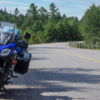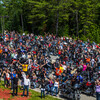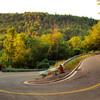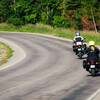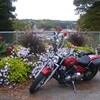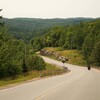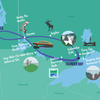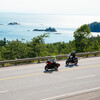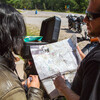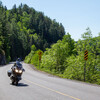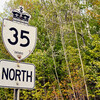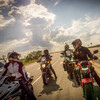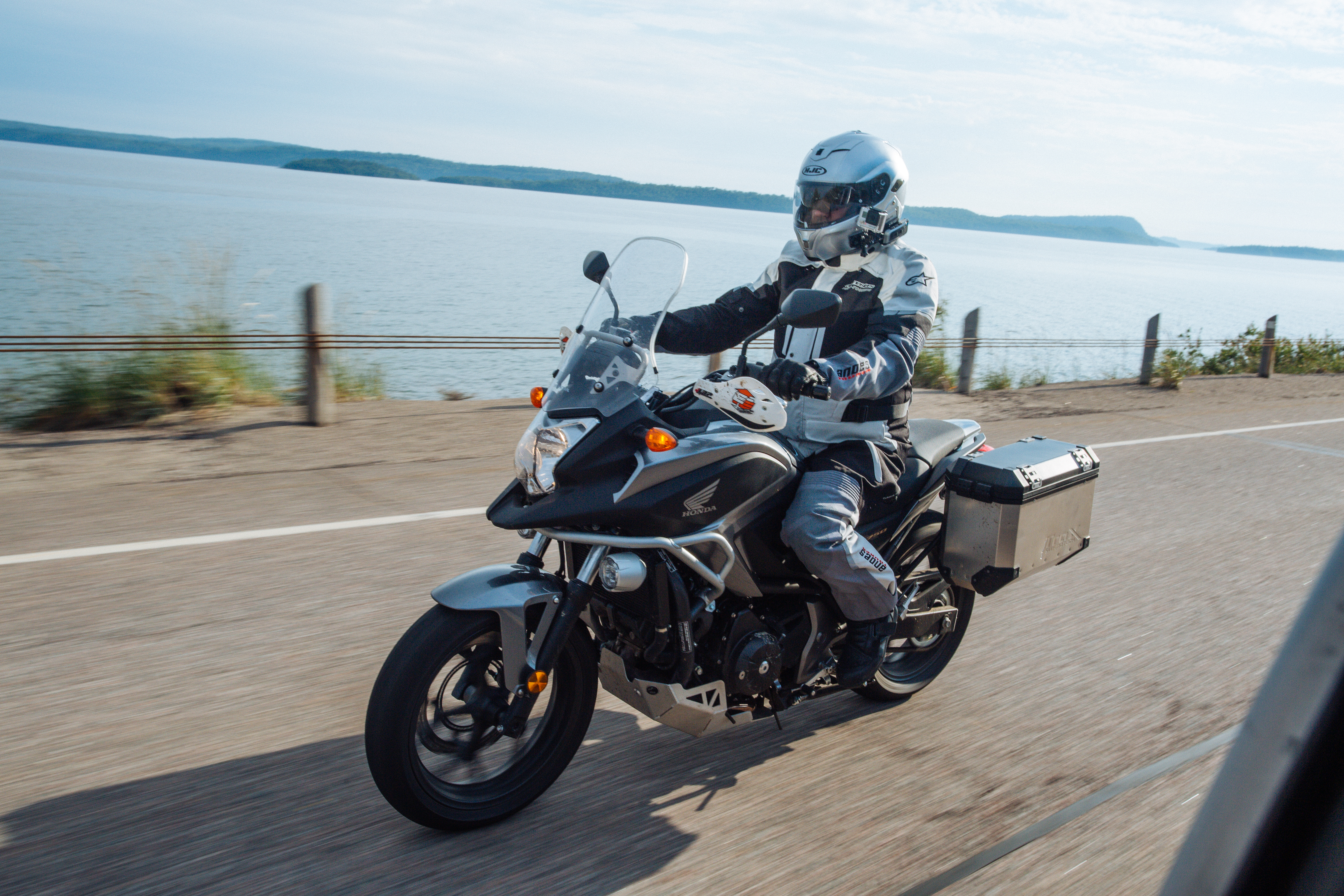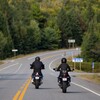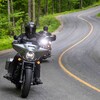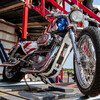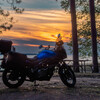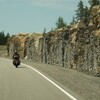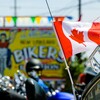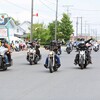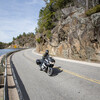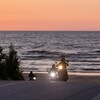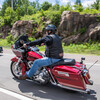
Riding With Your Camera? Read This!
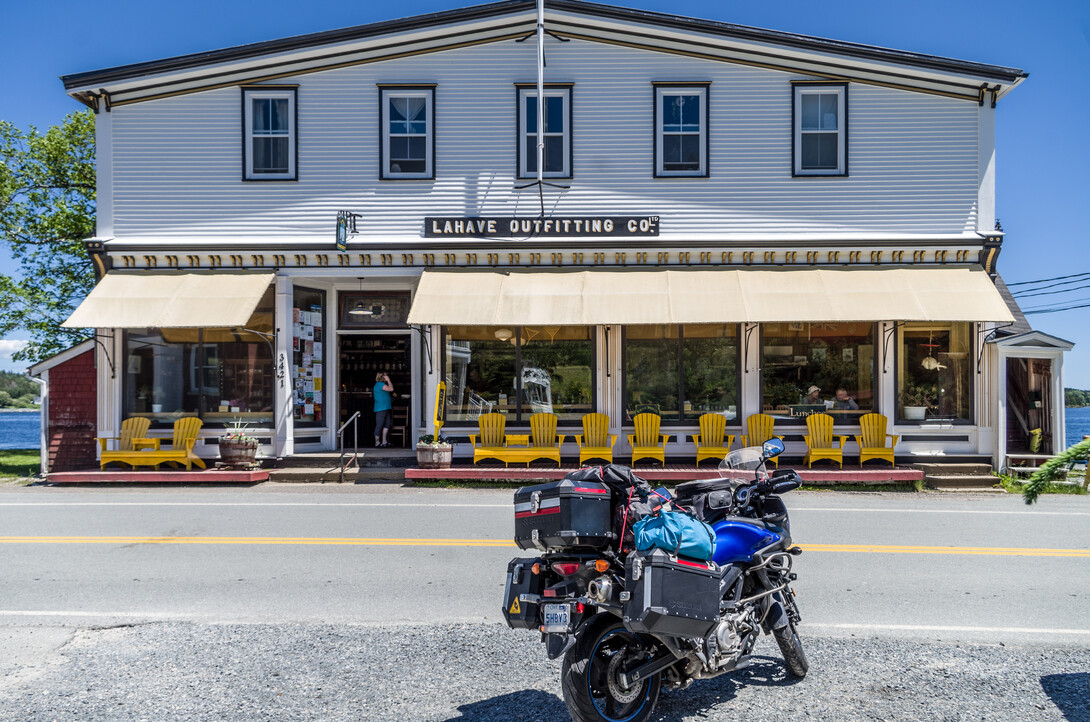
Some places you may never ride to again. But, even if you do go back, you can’t take the same photographs twice. The light will be different. The weather will be different. What inspires you as a photographer will be different. This makes it critical for you to get your shot the first time, and that’s what this two-part series is about.

Colourful Muskoka chairs always make for a great subject.
For me, it all started when I got home from a trip to Northern Ontario and asked myself, “Why do my photos not look like the ones on the tourist websites?” I rode there. To the very same place. What did those photographers know that I didn’t? Frustrated with the poor quality of my photos, I was determined to find out.
Over the last nine years, I’ve taken photography courses, read dozens of photography books, watched countless instructional videos, and shot tens of thousands of photos. And, even though I now have many professional jobs behind me, I am still learning. The good news? My photos continue to get better, and I occasionally even take a great one. To get you up to speed as fast as possible, here are some of the things I've learned along the way.
Joel Sartore is an author, teacher, and renowned National Geographic photographer. I like the simplicity of his description of a good photo, “There are three elements that together create a good photograph: the subject, the composition, and the light. A decent photograph may have one of these; a good or great photograph may have two. A stunner will have all… [three].”
Not only is this easy to remember, but it’s also nice to know that you don’t need all three elements to create a good image. Sometimes a subject is so interesting, it does most of the work, or the light is so great it does most of the work. But, when you get all three, it is the holy trinity of great photography.
Here in part one, we'll learn about choosing an interesting subject (and a few more ideas).
Check out part two to learn about lighting and composition.
Your photos should reflect how you see the world. Here are a few tips to help you capture your vision and memories in photos that are more interesting and compelling.
1. Make it yours!
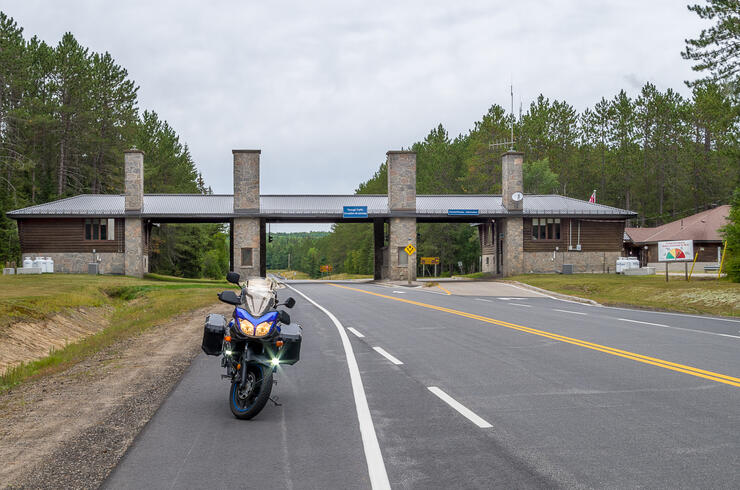
If you've seen it before (e.g., on a postcard), try to be more creative and shoot it another way. Go beyond the obvious. Search for subjects that tell about where you've been in a way that only you can say it. Shoot the landmark, and you've got the postcard. Shoot something that interests you with the landmark in the background, and you've created something interesting and unique. Position your bike in the foreground. (But please, not always. It will get tiresome quickly.) Also, shoot local detail: food, culture, dress, architecture, and events.
2. Shoot from different angles.
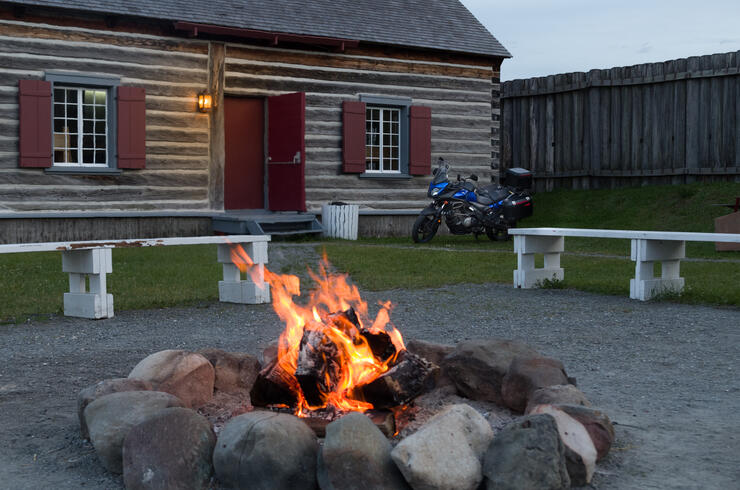
Try a shot from an eagle's eye view, (Can you get higher?) Ride the gravel road to the mountain lookout and shoot from there. Shoot from below. (Worm’s eye view.) Stop shooting everything from standing height. Shoot at the animal’s or child’s eye level. Shoot at the headlight level of your motorcycle. Don’t shoot everything from the front like everybody else. Try a shot from the side or the back.
3. Add people.
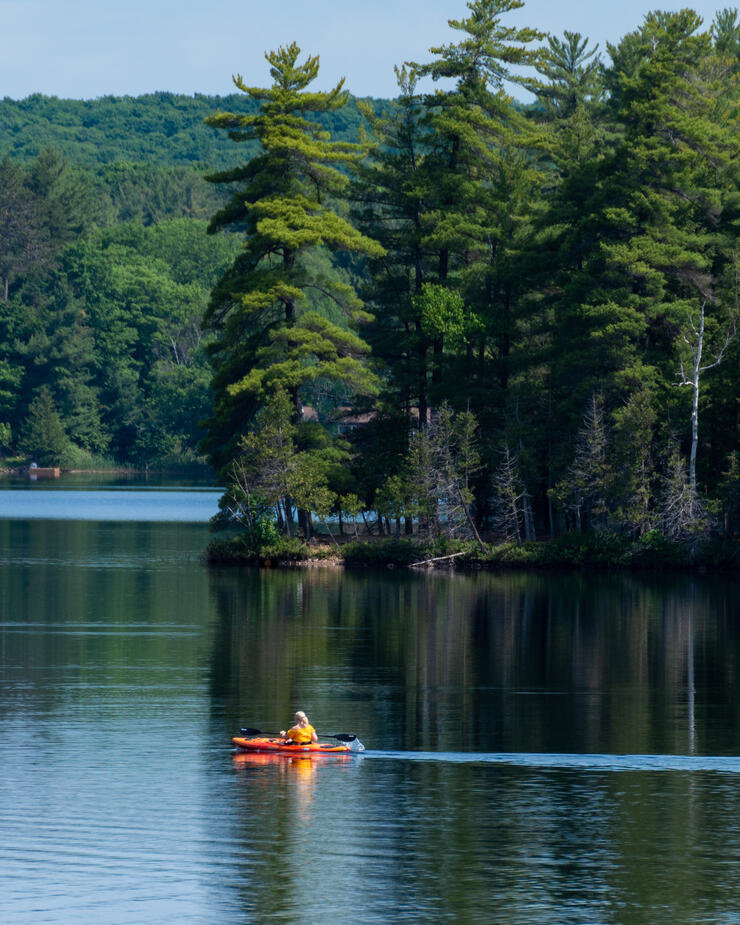
Don't wait for people to walk out of your photo, wait for people to walk (or ride) into it. People create humanity, interest, action, and scale. Look for intimate moments and moments of surprise. Include friends, locals, other tourists, or fellow moto-tourists.
4. Choose a setting and wait.
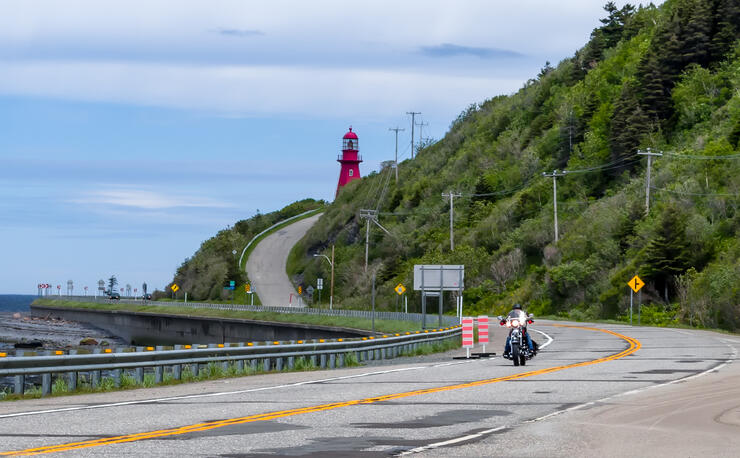
For example, when I was shooting a red lighthouse by the coastal highway, I wanted a motorcycle in the shot with the lighthouse in the background to give the location context vis a vis my solo motorcycle tour. So, I set up and waited, and sure enough, in less than five minutes, a rider came along. Without the motorcyclist, it wouldn’t have told the story I wanted to tell.
5. Shoot like a Cinematographer.

Say you stop at a restaurant. You take a picture of its exterior with your bikes and friends out front. (A pretty usual shot.) As you look up, you see a weathered local wearing a cowboy hat framed by the doorway. You zoom in and shoot him. As you get closer, you see that the door has an interesting sign above it, so you shoot a detail of the sign. Once indoors, you take a photograph of the menu and the succulent short ribs as they arrive at your table. You shoot your wife, covered in BBQ sauce, joyously devouring them. You get the idea. Go beyond the ordinary. Shoot a complete story and use all of the different types of shots at your disposal to do so, from wide-angle establishing shots to macro detail shots and everything in between.
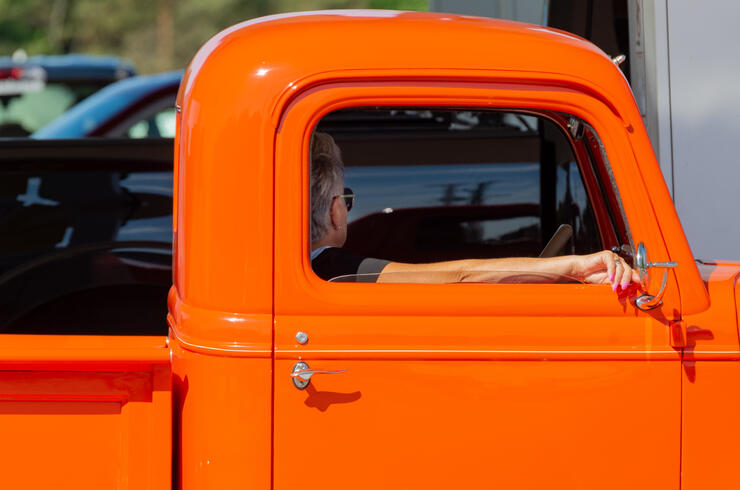
6. remember the 360º rule.
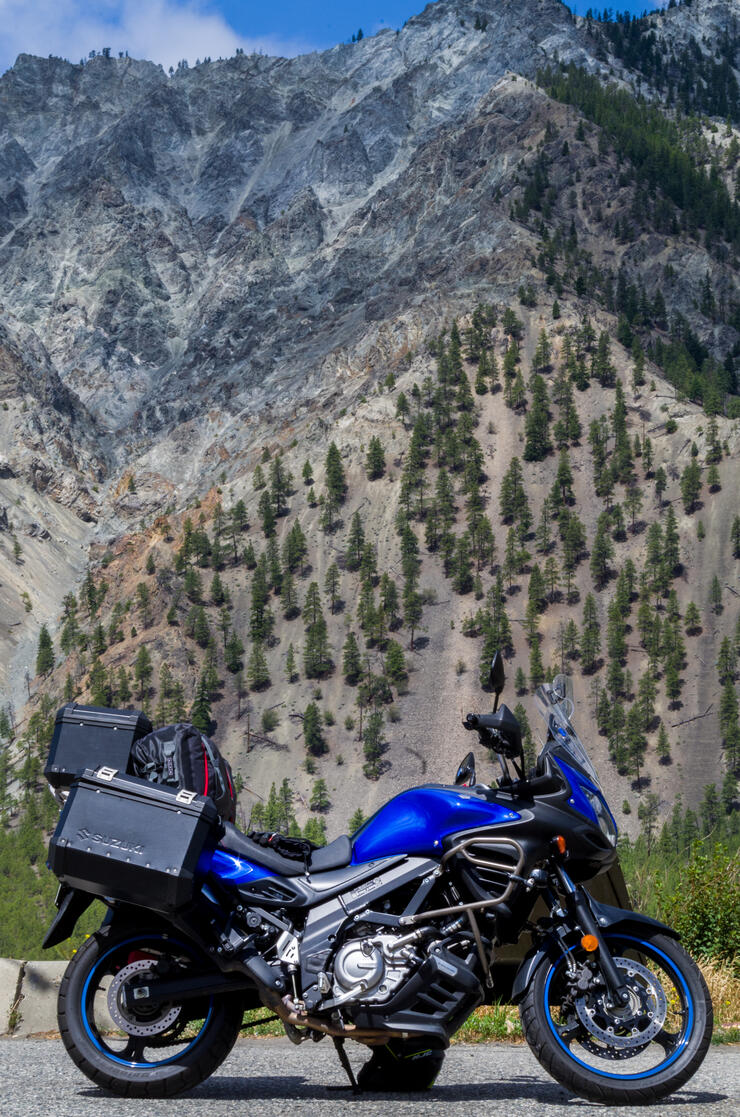
I watched a 360º video taken from a scenic lookout. As it panned around, I saw five superb shots that weren't the standard lookout shots. Here's what I learned. I, just like everybody else, would probably shoot the usual lookout shot and stop there. It was the most uninteresting shot of the bunch. The mountains behind were much closer, more craggy, and emphasized the steepness of the terrain. Don't shoot what everyone else is shooting. Always see what else is there. Look up, look down, and look around 360º.
7. Sunrises and sunsets are a photographic cliché. But, they don’t have to be if you look for originality here too.
Find a great composition—more about that in Part 2. Also, getting a good exposure shooting into the sun can be tricky. If you turn around and shoot what’s behind you, you will not only find that it’s bathed in beautiful light but likely not a shot that most people will think to take.
8. Be spontaneous.
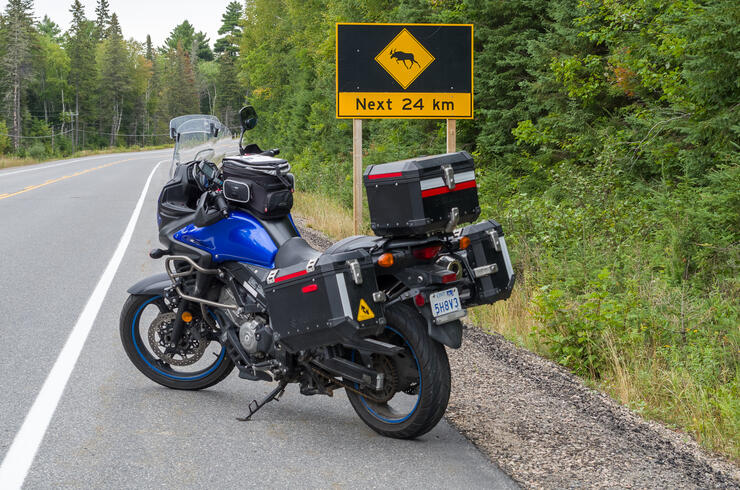
Regardless of how much preparation you do, you will always find things en route that will be fun to explore and fun to shoot. Don't have such a tight schedule that you can't change it up a bit. Motorcycles! Aren't they all about freedom?
9. Listen to your gut.
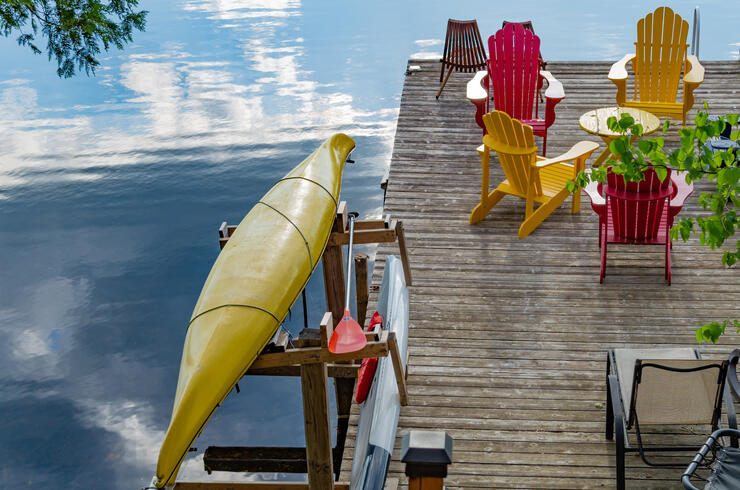
If a subject tells you to shoot it, shoot it. Something caught your eye. You may not know what until you look at it later. If in doubt, shoot it and delete it later. But don’t delete it too quickly. Once, when looking at a book by a master photographer, I saw a shot that looked very similar to one I had taken. But I didn’t know why I had taken it, so I deleted it. I kicked myself for that one. Trust your gut. You may not know what works about your photo yet, but you may later.
10. Be alert.
Interesting stories unfold right in front of us every day. But, you have to be ready. If you look at street photographers' work, you might be inclined to wonder how all of the interesting things happen in front of them and not you. You know that's not true. They are just ready.
11. Research the sights you want to see.
Using Google, you can create a list of sights you would like to see. But beware of what other photographers say. Many people are looking for the usual postcard photos. Don't follow the crowd. Shoot what interests you. Plan to stay at places that offer opportunities to do just that. That way, you can catch the best light at sunset or sunrise.
12. Be safe.
Lastly, and most importantly, be safe. When I'm touring, I miss way more great shots than I get. I come around a curve and see a perfect scenic vista, beautifully lit in post-storm light. I check my mirrors, and as usual, there is a vehicle barreling down on me from behind. I check the shoulder, and it doesn't offer a safe egress or is non-existent. I ride on to see if I can find a place to pull over or turn around. By then, the light is gone, and so is the moment. That's why it's great to get to camp or your motel a little early so you can go out to shoot. I've missed lots of great shots, but I've taken some good ones too. The number one priority is to be safe!
In part two, we're going to complete the trinity by looking at the other two elements of a great photograph: great light and good composition.
Until then, ride safe and take some interesting photos.
Check out part two in the series here to learn all about lighting and composition.
Recommended Articles
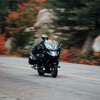
Bucket List Motorcycling in Ontario, Canada 2026
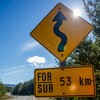
Ontario's Best Twisties: Five Roads to Get Your Lean On

The Big Belly Tour—A Complete List of Ontario's BBQ Joints
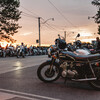
It's Bike Night in Ontario 2024
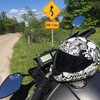
Ontario's Top Twisties
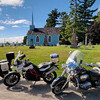
Have You Ridden Canada's OG Highway? Here's Why Every Rider Needs to Hit Up Historic Highway 2
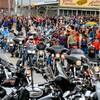
23 Amazing Photos That Prove PD13 Is Still The Best Motorcycle Event Ever
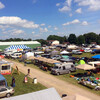
Motorcycle Swap Meets in Ontario—The Complete List for 2025
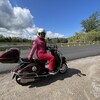
And a Vespa shall lead them all...
